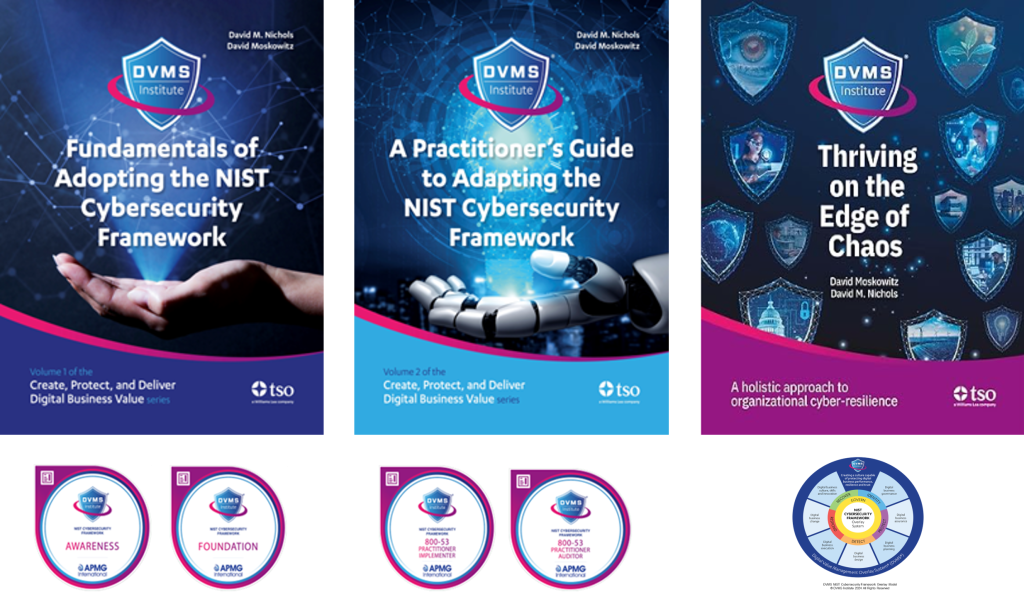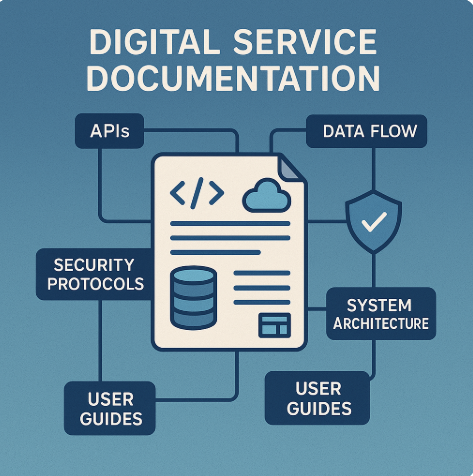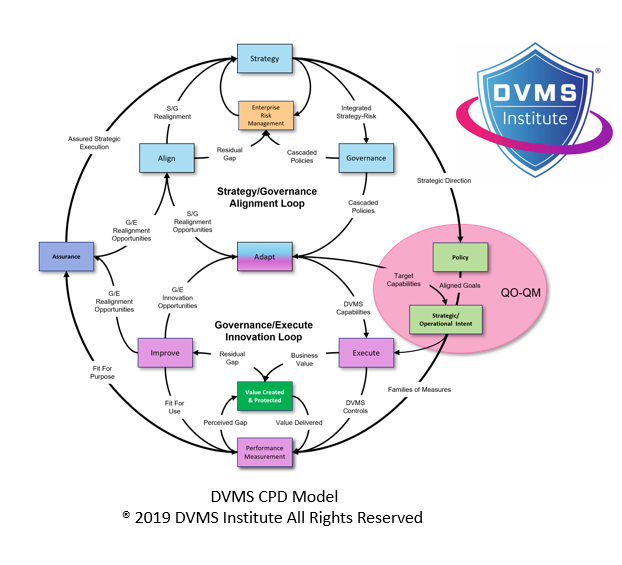Documentation – A Key Requirement for Cyber Operational Resilience Audit
Rick Lemieux – Co-Founder and Chief Product Officer of the DVMS Institute
The Expanding Digital Ecosystem
Modern businesses operate within a digital environment that is vastly interconnected, volatile, and complex. These ecosystems encompass information systems, cloud infrastructure, supply chains, IoT devices, mobile and AI technologies, and third-party services. Each component introduces dependencies, vulnerabilities, and potential entry points for cyber threats. Documenting these assets, relationships, dependencies, and flows is vital for understanding where risks lie and how to manage them effectively.
Systems Thinking and Operational Resilience
A systems-based approach helps organizations “see the whole” rather than manage siloed components in isolation. Systems thinking promotes a comprehensive understanding of how various digital elements interact, where dependencies exist, and how risk propagates through the system. Documenting systems, workflows, and data flows is essential for applying this perspective. This documentation allows for ongoing gap analysis, action planning, and performance monitoring.
Cultural Alignment and Accountability
Organizational culture is pivotal in how effectively a business can document, understand, and manage its digital ecosystem. Without cultural buy-in, even the most robust cybersecurity plans fail. Organizational leadership must act as cultural ambassadors who foster transparency, build trust, and promote accountability across all levels. Embedding cybersecurity into everyday operations—from boardroom strategy to daily workflows—requires cultural alignment with digital business objectives.
Security-aware behavior must be normalized across all staff. When employees understand how their work contributes to the organization’s risk posture and are equipped with training, tools, and guidance, they become active participants in protecting business value. Documenting roles, responsibilities, and access privileges helps ensure this alignment and minimizes ambiguity in the case of an incident.
Leveraging Documentation for Continuous Improvement
Understanding the ecosystem isn’t a one-time activity. Continuous documentation and assessment are necessary for organizational learning and improvement. This dynamic approach aligns with the concept of resilience. Resilience is not simply about withstanding a breach but adapting and recovering quickly, learning from the incident to prevent recurrence. Comprehensive documentation of systems, controls, incidents, and recovery outcomes forms the basis of this organizational muscle.
Documentation Requirements for Audits
Documentation is critical in demonstrating compliance, maturity, and accountability in a cybersecurity audit. Auditors rely heavily on documented policies, procedures, system inventories, access controls, incident response plans, and risk assessments to evaluate the effectiveness of an organization’s cybersecurity posture.
Clear, current, and comprehensive documentation allows auditors to trace decision-making, verify control implementations, and assess how well the organization adheres to regulatory frameworks like the NIST Cybersecurity Framework. Without this level of visibility, even well-implemented security practices may fail to meet audit requirements. Therefore, robust documentation supports operational excellence and serves as tangible proof of diligence during formal reviews.
Enabling Innovation through Protection
When digital business systems are well documented, businesses can confidently innovate their operational resilience. Proper documentation facilitates this agility by clarifying what needs to be protected and how. It helps organizations avoid the trap of “security through obscurity,” in which complexity and undocumented systems obscure vulnerabilities until a breach forces attention.
Conclusion
In summary, understanding and documenting the whole digital ecosystem is critical for modern businesses seeking to thrive in a world defined by complexity and risk. It enables informed decision-making, supports regulatory compliance, aligns cybersecurity with business objectives, and empowers organizations to innovate safely. Resilience, rather than mere compliance, should be the goal. And resilience begins with a clear, shared, and continually updated understanding of the systems that underpin digital business value.
About the Author

Rick Lemieux
Co-Founder and Chief Product Officer of the DVMS Institute
Rick has 40+ years of passion and experience creating solutions to give organizations a competitive edge in their service markets. In 2015, Rick was identified as one of the top five IT Entrepreneurs in the State of Rhode Island by the TECH 10 awards for developing innovative training and mentoring solutions for boards, senior executives, and operational stakeholders.
In today’s digitally driven economy, cyber disruptions are no longer an “if” but a “when.”
The DVMS Institute’s Certified Training Programs teach organizations the skills to build and operate a Holistic, Adaptive, and Culture Aligned System capable of coordinating Cyber Operational Resilience actions across a Complex Digital Ecosystem.
True cyber resilience requires the seamless alignment of organizational Strategy, Governance, and Operations supported by a culture committed to sustaining and continually innovating digital business operations performance.

The DVMS positions cyber resilience as a strategic, enterprise-wide capability powered by the Institute’s CPD, Z-X, and 3D Knowledge models.
This systems-based approach to cyber operational resilience requires engagement from all Employees and Partners, each playing a distinct role in proactively identifying and mitigating the systemic risks that threaten digital business operations.
This adaptive, forward-looking approach to Governance, Resilience, and Assurance (GRA) positions businesses to:
- Maintain Operational Stability Amidst Constant Digital Disruption
- Drive Agility and Trust Across Your Digital Ecosystem
- Satisfy Critical Regulatory and Certification Requirements
- Leverage Cyber Resilience as a Competitive Advantage
DVMS Explainer Videos
- Architecture Video: David Moskowitz explains the DVMS System
- Case Study Video: Dr. Joseph Baugh Shares His DVMS Story.
- Overlay Model – What is an Overlay Model
- ZX Model – The MVC’s that power operational resilience
- CPD Model – Adaptable governance and assurance
- 3D Knowledge Model – Enabling holistic organizational learning
- FastTrack Model – A phased approach to cyber resilience
Digital Value Management System® is a registered trademark of the DVMS Institute LLC.
® DVMS Institute 2025 All Rights Reserved




